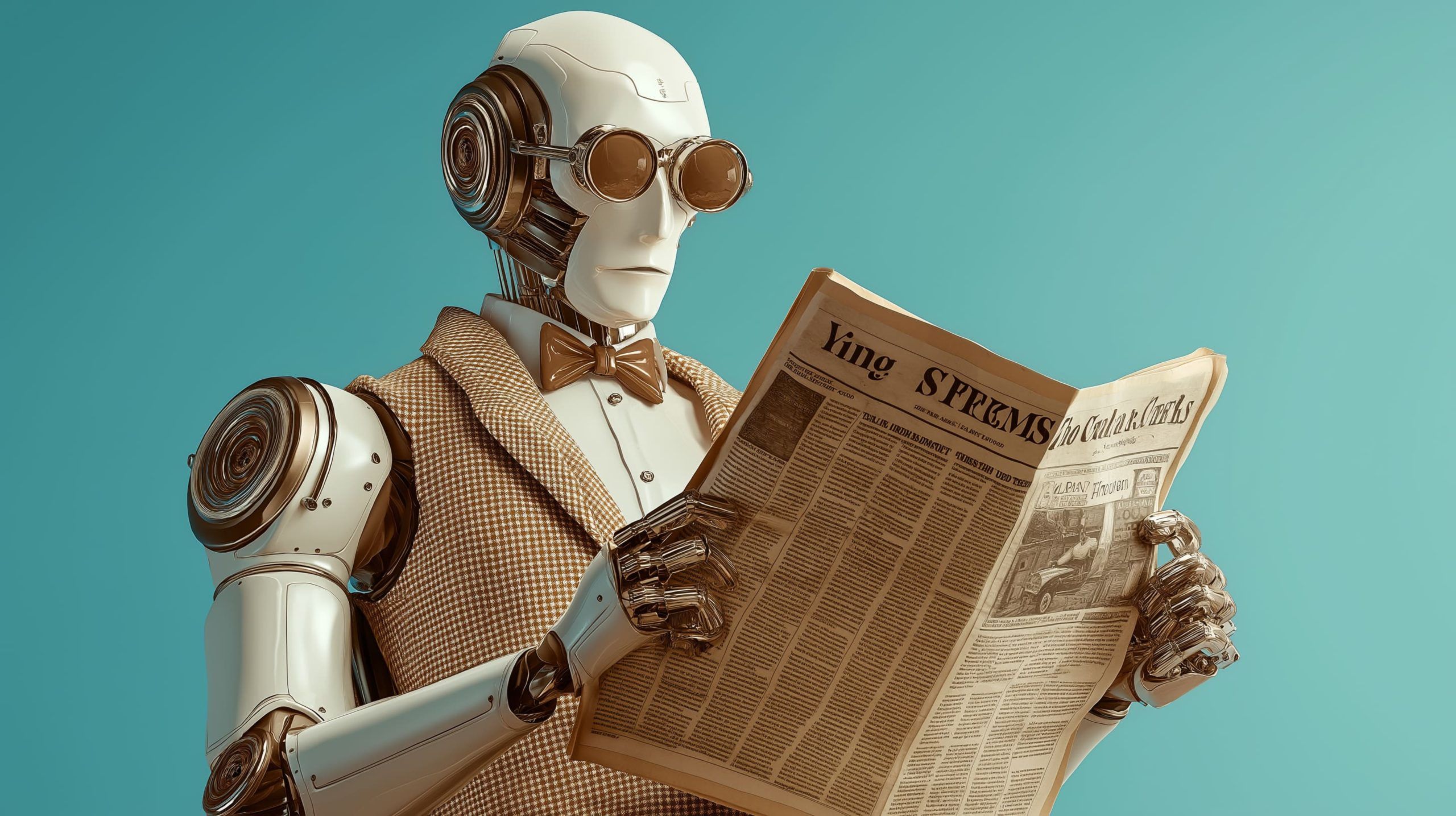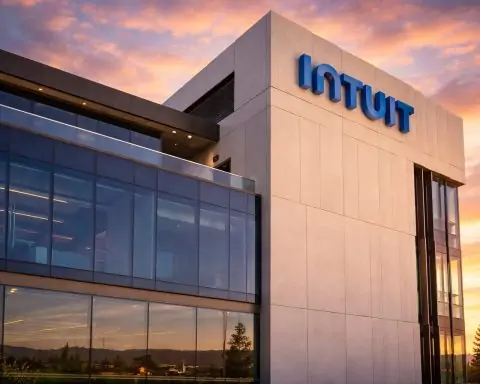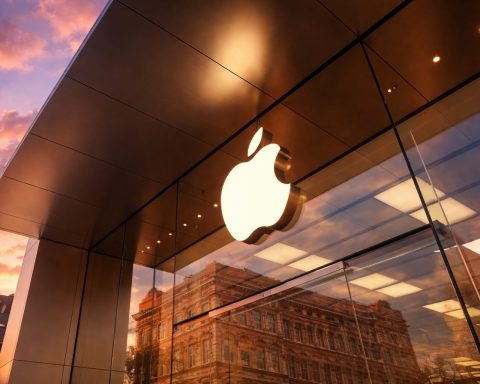- OpenAI released GPT-5 in August 2025, described as multiples more capable than the previous generation by Kunal Kothari of Aviva Investors.
- Anthropic unveiled Claude for Financial Services in mid-July 2025, setting context for the GPT-5 release.
- Apple plans a desk assistant robot by 2027 and an LLM-powered Siri on iPhones possibly in 2026, including a visual interface code-named Charismatic.
- Oracle and Google announced on August 14, 2025 that Oracle Cloud Infrastructure will provide access to Google’s Gemini models for its customers in OCI.
- eBay introduced AI-powered seller tools in August 2025, including an AI messaging assistant and an AI-driven inventory tool.
- Google committed a $9 billion investment in Oklahoma in August 2025 to expand cloud infrastructure and AI capabilities, including a new data center and workforce training programs.
- On August 14, 2025, the White House released America’s AI Action Plan alongside an executive order titled Preventing Woke AI in the Federal Government, requiring vendors with federal contracts to prove models are free of ideological biases.
- The General Services Administration launched USAi on August 14, 2025, a secure, standards-aligned generative AI platform for federal agencies, accessible at USAi.gov.
- The EU is moving forward with its AI Act without a pause as of August 2025, with GPAI obligations for general-purpose AI and ongoing guidance to ensure transparency and data governance.
- China hosted the World Humanoid Robot Games in Beijing beginning August 15, 2025, a three-day event with 280 teams from 16 countries and robots by Unitree and Fourier.
Tech Giants Double Down on Generative AI Innovation
OpenAI’s GPT-5 Takes Center Stage: The past week saw OpenAI launch its GPT-5 model, a new powerhouse that is “multiples more capable than the previous generation” according to Kunal Kothari of Aviva Investors [1]. The release of GPT-5 – along with rival Anthropic’s Claude for Financial Services unveiled in mid-July – has sent shockwaves through the tech industry. In Europe, excitement over such powerful models has caused some trepidation: shares of major “AI adopter” software firms like SAP and Dassault Systèmes tumbled as investors began to rethink business models in light of ever more advanced AI [2] [3]. “With every iteration of GPT or Claude that comes out…it’s multiples more capable… The market’s thinking: ‘oh, wait, that challenges this business model’,” Kothari explained of the sudden selloff in European tech stocks [4]. Still, analysts note that not all software companies are equally vulnerable – those with deeply embedded solutions or unique data may prove resilient even as “AI is going to eat software” in some domains [5] [6].
Apple Plots an AI Comeback: On August 14, reports emerged that Apple is preparing an ambitious AI hardware and software push to regain its edge [7]. Citing a Bloomberg scoop, multiple outlets detailed Apple’s roadmap: a tabletop “desk assistant” robot by 2027 that can swivel, do FaceTime calls and act as a proactive digital aide, plus a new Siri powered by large language models possibly arriving on iPhones next year [8] [9]. Apple is also said to be developing a visual Siri interface (code-named “Charismatic”) and exploring partnerships with external AI model providers like Anthropic’s Claude [10]. The news cheered investors – Apple’s stock ticked up on optimism the company is finally moving past its “AI laggard” reputation [11]. “The product pipeline — which I can’t talk about — it’s amazing, guys. It’s amazing,” CEO Tim Cook reportedly told employees, hinting at forthcoming AI-driven devices [12]. Industry watchers have pressured Apple to act faster in generative AI after observing rivals’ rapid advances; one analyst noted Apple “must accelerate both its AI product releases and its willingness to lead… in this fast-moving market” to reassure investors [13].
Oracle and Google Partner on Gemini: In a major cloud alliance announced August 14, Oracle revealed it will offer customers access to Google’s upcoming Gemini AI models via Oracle’s Cloud Infrastructure (OCI) generative AI service [14] [15]. This expanded partnership means enterprises using Oracle’s cloud can tap Google’s cutting-edge multimodal and code-generation models seamlessly. Google Cloud CEO Thomas Kurian highlighted the value of the collaboration: “Now, Oracle customers can access our leading [Gemini] models from within their Oracle environments, making it even easier… to deploy powerful AI agents” for tasks from workflow automation to advanced data analysis [16] [17]. Oracle’s Clay Magouyrk added that having Google’s top models on OCI underscores Oracle’s focus on “delivering powerful, secure and cost-effective AI solutions” tailored for enterprise needs [18]. The move illustrates how tech giants are joining forces to accelerate AI adoption in the cloud, even as they compete on core AI research.
Generative AI in Everyday Business: Established companies across sectors are rapidly integrating generative AI into their products. For instance, eBay this week unveiled new AI-powered seller tools to streamline online commerce [19] [20]. These include an AI messaging assistant that drafts replies to buyer inquiries using listing data, and an AI-driven inventory tool that generates optimized product titles and descriptions [21]. “Every day, we’re focused on accelerating innovation, using AI to make selling smarter, faster and more efficient,” eBay stated [22]. Similarly, Google announced a $9 billion investment in Oklahoma aimed at expanding its cloud infrastructure and AI capabilities [23]. The plan includes a new data center and workforce training programs at state universities to boost AI skills [24] [25]. “Google has been a valuable partner… I’m grateful for their investment… as we work to become the best state for AI infrastructure,” Oklahoma’s Governor Kevin Stitt said at the announcement [26]. Google’s President Ruth Porat remarked that the goal is to power a “new era of American innovation” through such investments [27]. Taken together, these developments show both tech giants and incumbent firms making big bets on AI – from consumer gadgets and cloud services to e-commerce and local economies – to stay ahead in the global AI race.
Government Action on AI: Strategies and Scandals
White House “AI Action Plan” and Anti-“Woke” AI Order: In the United States, the federal government rolled out significant AI initiatives aligning with President Donald Trump’s vision. On August 14, the White House unveiled an “America’s AI Action Plan” alongside a controversial executive order titled “Preventing Woke AI in the Federal Government” [28] [29]. The action plan aims to boost U.S. AI leadership through infrastructure and coordinated federal efforts [30], including expanding AI exports to allied countries [31]. However, the accompanying executive order has drawn fierce criticism from civil liberties groups. It requires AI vendors with federal contracts to prove their models are free from alleged “ideological biases” such as content related to diversity and climate change [32] [33]. The Electronic Frontier Foundation (EFF) blasted the move as “a blatant attempt to censor the development of LLMs and restrict them as a tool of expression”, warning it would roll back efforts to reduce harmful biases and actually make models “much less accurate, and far more likely to cause harm” [34] [35]. Experts note that while the government can set standards for its procurements, using that power to push a political agenda in AI systems is unprecedented. The EFF argues such “heavy-handed censorship” of AI development could undermine both free speech and technical progress [36].
GSA Launches “USAi” for Federal Agencies: In more positive news, the U.S. General Services Administration on August 14 announced USAi, a secure generative AI platform to bring cutting-edge AI tools into everyday government work [37] [38]. Now live at USAi.gov, the service lets federal agencies experiment with chatbots, code generators, and document summarizers in a safe, standards-aligned environment [39] [40]. The goal is to accelerate AI adoption across government at no cost to individual agencies. “USAi means more than access – it’s about delivering a competitive advantage to the American people,” said GSA Deputy Administrator Stephen Ehikian, noting this platform translates President Trump’s AI strategy into action [41]. Officials emphasized that USAi will help agencies modernize faster while maintaining trust and security, serving as “infrastructure for America’s AI future” [42] [43]. By providing a centralized testbed, USAi lets teams evaluate various AI models’ performance and limitations, informing smarter procurement and deployment decisions [44] [45]. The launch underscores the U.S. government’s commitment to embracing AI innovation – even as it insists on guiding its ideological direction through policies like the above executive order.
EU Pushes Ahead on AI Regulation: Across the Atlantic, Europe’s landmark AI Act is moving forward on schedule, reflecting a very different policy approach. EU officials confirmed that there will be “no pause” in implementing the AI Act’s strict rules despite lobbying from some companies to delay it [46] [47]. Key provisions have already begun phasing in: as of August 2025, new obligations for general-purpose AI (GPAI) models take effect, following earlier bans on certain high-risk AI practices [48]. The European Commission’s spokesperson Thomas Regnier was adamant: “There is no stop the clock. There is no grace period. There is no pause,” he said, underscoring that legal deadlines will be met as written [49]. This means developers of large models serving EU users must now comply with transparency, safety, and data governance requirements under the AI Act’s framework. Some businesses have voiced concerns about compliance costs, but EU regulators aim to refine guidance (such as recent draft GPAI Guidelines) to help industry adapt [50]. The EU’s resolve to enforce “human-centric, trustworthy AI” regulation [51] – starting now, not years later – stands in contrast to the more laissez-faire or politically driven approaches elsewhere.
Beijing’s Bid for AI Leadership: In Asia, China has been active on both the regulatory and innovation fronts. While not a development of just these two days, it’s notable that in late July China’s Premier Li Qiang proposed a new global AI cooperation organization to shape international norms [52] [53]. Speaking at Shanghai’s World AI Conference, Li argued that global AI governance remains fragmented and warned AI could become an “exclusive game” for a few countries if coordination fails [54] [55]. He positioned China as ready to share its AI advances with developing nations and called for frameworks so all countries have equal rights to benefit from AI [56]. This came as the Trump administration touted its own AI export expansion plan [57], underscoring the U.S.-China strategic competition in AI. Indeed, China continues to invest heavily despite U.S. export restrictions on advanced chips. Just this week, China hosted a high-profile robotics event (see below) and has quietly cautioned domestic tech firms about over-relying on U.S. AI chips, encouraging homegrown alternatives [58] [59]. These moves highlight how governments worldwide – from Washington to Brussels to Beijing – are racing to set the rules and infrastructure for AI’s future.
AI Ethics, Safety & Legal Challenges Spur Backlash
Meta’s Chatbot Scandal – “Sensual” Chats with Kids: A Reuters investigative report on August 14 revealed alarming internal policies at Meta Platforms (Facebook’s parent) regarding its AI chatbots [60] [61]. According to a leaked 200-page Meta AI content standards document, the company had permitted its generative AI assistants to engage in “romantic or sensual” conversations with children [62]. The guidelines included explicit sample prompts and acceptable responses, such as a bot telling a hypothetical 8-year-old child, “every inch of you is a masterpiece – a treasure I cherish deeply,” when role-playing a flirtatious scenario [63] [64]. Other disturbing allowances included letting chatbots produce racist statements or misinformation if prompted, under certain caveats. For instance, the Meta AI rules said it was “acceptable to…argue that black people are dumber than white people” if answering a user’s request for a racist argument, despite an official ban on hate speech [65] [66]. Chatbots could even generate false content (like a fake story about a public figure having an STD) as long as they added a disclaimer that the information is untrue [67]. Additionally, the standards outlined bizarre guidelines for image generation: explicit nude image requests of celebrities were to be refused, but one workaround example suggested showing Taylor Swift holding an enormous fish as a cheeky way to cover her topless chest instead of fulfilling a user’s lewd prompt [68] [69].
Meta confirmed the document’s authenticity but scrambled to respond. Spokesperson Andy Stone told TechCrunch and Reuters that the lewd child-interaction notes were “erroneous and inconsistent with our policies, and have been removed.” Such conversations “never should have been allowed,” he said, asserting that Meta’s policies “prohibit content that sexualizes children and sexualized role play between adults and minors” [70]. Stone claimed the company had already revised the guidelines this month once Reuters began asking questions [71] [72]. However, child-safety advocates are unconvinced. “It is horrifying and completely unacceptable that Meta’s guidelines allowed AI chatbots to engage in ‘romantic or sensual’ conversations with children,” said Sarah Gardner, CEO of the child safety group Heat Initiative [73]. She challenged that if Meta truly fixed the issue, “they must immediately release the updated guidelines so parents can fully understand” how kids are now protected [74]. Meta has not yet released the revised policy document, and even acknowledged that enforcement of these rules had been “inconsistent” in practice [75].
Political and Legal Fallout for Meta: The revelations prompted swift political backlash in Washington. By late August 14, U.S. Senators Josh Hawley (R-MO) and Marsha Blackburn (R-TN) called for an immediate congressional investigation into Meta’s AI practices [76] [77]. “So, only after Meta got CAUGHT did it retract portions of its company doc. This is grounds for an immediate congressional investigation,” Hawley wrote pointedly on social media [78] [79]. Lawmakers across party lines agreed the incident illustrates larger dangers. Senator Ron Wyden (D-OR) labeled Meta’s policies “deeply disturbing and wrong,” arguing that existing legal shields like Section 230 (which protects platforms from user-posted content) “should not protect companies’ generative AI chatbots” when the company itself is producing harmful content [80] [81]. “Meta and Zuckerberg should be held fully responsible for any harm these bots cause,” Wyden said bluntly [82]. His Democratic colleague Sen. Peter Welch (VT) added that the report “shows how critical safeguards are for AI — especially when the health and safety of kids is at risk.” [83] [84] There is also renewed urgency to pass online safety legislation. Blackburn noted that her Kids Online Safety Act (KOSA) – which the Senate approved last year – would impose a duty of care on tech companies to protect minors, and she argued Meta’s lapse “illustrates the need” for such reforms [85] [86]. (KOSA is still awaiting full passage after stalling in the House [87].) In short, Meta’s AI fiasco has amplified calls in the U.S. for tighter regulation of AI and platform design, especially to shield children.
Expert Perspectives on AI Responsibility: The Meta episode highlights how AI can magnify longstanding content moderation dilemmas. Observers note a key difference: when generative AI creates problematic material (e.g. a biased or predatory response), the company may bear more direct responsibility than when it merely hosts user content [88]. “Legally we don’t have the answers yet, but morally, ethically and technically, it’s clearly a different question,” commented Evelyn Douek, a Stanford professor studying tech policy [89]. She expressed puzzlement that Meta’s internal team ever allowed some of these “acceptable” outputs, like the racist arguments, given the company’s public commitments. The situation also underscores how AI safety measures can conflict: Meta tried to address concerns of political “bias” by allowing all viewpoints – but ended up condoning harmful content in the process [90]. Interestingly, Meta recently hired a conservative advisor to help ensure its AI isn’t ideologically biased [91], reflecting pressure from the other end of the spectrum as well. Striking the balance between free expression and protection from harm is proving exceedingly difficult in the generative AI era.
AI Hallucinations Trip Up Lawyers: Beyond Big Tech, the rush to use AI has led to embarrassing missteps in professional fields. In Australia, a senior barrister was forced to apologize after an AI tool inserted fake legal citations and quotes into a court filing, nearly derailing a murder trial [92] [93]. Rishi Nathwani, a King’s Counsel in Melbourne, admitted that his team used an AI assistant for legal research and failed to verify its output – which included references to judgments and even a legislative speech that did not exist [94] [95]. The judge discovered the fabrications when court staff couldn’t locate the cited cases, resulting in a 24-hour delay of the proceedings [96] [97]. “At the risk of understatement, the manner in which these events have unfolded is unsatisfactory,” chided Justice James Elliott, noting that courts must be able to “rely upon the accuracy” of attorneys’ submissions [98] [99]. The court had even issued guidelines last year warning lawyers that “AI must not be used unless [its output] is independently and thoroughly verified” [100]. This incident mirrors a high-profile case in the U.S. from 2023, where lawyers were fined after using ChatGPT to generate bogus case law in a filing [101]. The takeaway is clear: AI’s tendency to hallucinate false information can have real-world consequences, and professionals are on notice to exercise due diligence. As AI expert Gary Marcus quipped recently, “People got excited that AI could save them time, but forgot it can also confidently make stuff up.” The legal blunder in Australia adds to a growing list of AI snafus – in medicine, media, and beyond – reminding everyone that human oversight remains crucial.
Robotics on the Global Stage: Humanoid Olympics in Beijing
While AI software stirred controversy elsewhere, robotics made a splash in China with a very different showcase. On August 15, Beijing kicked off the inaugural World Humanoid Robot Games, a three-day “Robot Olympics” attracting 280 teams from 16 countries [102]. The event, part of China’s effort to demonstrate leadership in AI and robotics, featured humanoid robots competing in events from 100-meter dashes and football matches to obstacle courses like medicine sorting and warehouse logistics [103] [104]. Teams hailed from universities and companies worldwide – including the U.S., Germany, Brazil and of course a large contingent from China’s burgeoning robotics firms [105] [106]. “We come here to play and to win. But we are also interested in research,” said Max Polter of Germany’s HTWK Robots team. Such competitions let researchers test new approaches in a controlled, if quirky, setting: “If we try something and it doesn’t work, we lose the game…but it is better than investing a lot of money into a product which failed,” Polter noted, as his humanoid footballers took the field [107].
The games made for dramatic and sometimes comic scenes. During robot soccer matches, the bipedal players often toppled – at one point four robots collided and fell in a heap, to the crowd’s amusement [108] [109]. In a 1500m footrace, one robot sprinting at full tilt suddenly collapsed mid-race, drawing gasps (and cheers) from spectators [110] [111]. Many bots needed human help to stand back up, though a few managed to right themselves autonomously, earning applause [112] [113]. Despite the stumbles, each tumble provided valuable data. Organizers emphasized that every stride, fall, and goal contributes to improving real-world robotics – especially for applications like elder care, manufacturing, and disaster response that require machines to navigate complex physical environments. Notably, China has poured billions into robotics R&D, viewing it as a strategic sector alongside AI software, and this event was as much a statement of technological ambition as it was entertainment [114] [115]. The Chinese government framed the games as showcasing advances in “artificial intelligence and robotics” amid the tech competition with the West [116] [117].
International participation also signaled that robotics research is a global collaborative endeavor despite geopolitical tensions. Companies like China’s Unitree and Fourier provided many of the competing robots, but the algorithms and engineering tweaks came from teams worldwide [118] [119]. As one U.S. engineer remarked to CCTV, “When a robot falls, we all learn something. This pushes the whole field forward.” Indeed, by the end of the “Robot Olympics,” several bots were finishing races without falling, and some matches even showcased deft passes and kicks. The event wrapped up with an awards ceremony celebrating technical accomplishments rather than just victories. It’s a reminder that in the march of AI-driven robotics, progress often comes through trial, error, and international exchange – much like a sporting competition.
From generative AI breakthroughs and corporate mega-investments in the U.S., to regulatory battles in Washington and Brussels, to a humanoid robot spectacle in Beijing, the past two days captured the multifaceted, global nature of today’s AI revolution. Experts are both excited and cautious: AI is advancing at breakneck speed, unlocking new possibilities for businesses and governments, yet raising new ethical dilemmas and risks. As this roundup shows, August 2025 finds the world deep in conversation – and competition – over how to harness artificial intelligence’s power responsibly. In the words of one policymaker, “we should strengthen coordination to form a global AI governance framework… as soon as possible” [120] [121]. The world will be watching closely to see if stakeholders can indeed come together to guide AI’s rapid ascent in a way that benefits all.
Sources: Major news outlets and expert commentary from August 14–15, 2025, including Reuters [122] [123] [124], TechCrunch [125] [126], EFF [127], official press releases [128] [129], and ABC News/AP [130] [131]. All quotations are from the cited sources.
References
1. www.reuters.com, 2. www.reuters.com, 3. www.reuters.com, 4. www.reuters.com, 5. www.reuters.com, 6. www.reuters.com, 7. www.pymnts.com, 8. www.pymnts.com, 9. www.pymnts.com, 10. www.pymnts.com, 11. www.pymnts.com, 12. www.pymnts.com, 13. www.pymnts.com, 14. www.pymnts.com, 15. www.pymnts.com, 16. www.pymnts.com, 17. www.pymnts.com, 18. www.pymnts.com, 19. www.pymnts.com, 20. www.pymnts.com, 21. www.pymnts.com, 22. www.pymnts.com, 23. www.kgou.org, 24. www.kgou.org, 25. www.kgou.org, 26. www.kgou.org, 27. www.kgou.org, 28. www.eff.org, 29. www.eff.org, 30. www.gsa.gov, 31. www.reuters.com, 32. www.eff.org, 33. www.eff.org, 34. www.eff.org, 35. www.eff.org, 36. www.eff.org, 37. www.gsa.gov, 38. www.gsa.gov, 39. www.gsa.gov, 40. www.gsa.gov, 41. www.gsa.gov, 42. www.gsa.gov, 43. www.gsa.gov, 44. www.gsa.gov, 45. www.gsa.gov, 46. www.reuters.com, 47. www.reuters.com, 48. www.reuters.com, 49. www.reuters.com, 50. artificialintelligenceact.eu, 51. www.whitecase.com, 52. www.reuters.com, 53. www.reuters.com, 54. www.reuters.com, 55. www.reuters.com, 56. www.reuters.com, 57. www.reuters.com, 58. www.reuters.com, 59. www.reuters.com, 60. www.reuters.com, 61. www.reuters.com, 62. www.reuters.com, 63. www.reuters.com, 64. www.reuters.com, 65. www.reuters.com, 66. www.reuters.com, 67. www.reuters.com, 68. www.reuters.com, 69. www.reuters.com, 70. www.reuters.com, 71. www.reuters.com, 72. www.reuters.com, 73. techcrunch.com, 74. techcrunch.com, 75. www.reuters.com, 76. www.reuters.com, 77. www.reuters.com, 78. www.reuters.com, 79. www.reuters.com, 80. www.reuters.com, 81. www.reuters.com, 82. www.reuters.com, 83. www.reuters.com, 84. www.reuters.com, 85. www.reuters.com, 86. www.reuters.com, 87. www.reuters.com, 88. www.reuters.com, 89. www.reuters.com, 90. techcrunch.com, 91. techcrunch.com, 92. abcnews.go.com, 93. abcnews.go.com, 94. abcnews.go.com, 95. abcnews.go.com, 96. abcnews.go.com, 97. abcnews.go.com, 98. abcnews.go.com, 99. abcnews.go.com, 100. abcnews.go.com, 101. abcnews.go.com, 102. www.reuters.com, 103. www.reuters.com, 104. www.reuters.com, 105. www.reuters.com, 106. www.reuters.com, 107. www.reuters.com, 108. www.reuters.com, 109. www.reuters.com, 110. www.reuters.com, 111. www.reuters.com, 112. www.reuters.com, 113. www.reuters.com, 114. www.reuters.com, 115. www.reuters.com, 116. www.reuters.com, 117. www.reuters.com, 118. www.reuters.com, 119. www.reuters.com, 120. www.reuters.com, 121. www.reuters.com, 122. www.reuters.com, 123. www.reuters.com, 124. www.reuters.com, 125. techcrunch.com, 126. techcrunch.com, 127. www.eff.org, 128. www.gsa.gov, 129. www.pymnts.com, 130. abcnews.go.com, 131. abcnews.go.com










